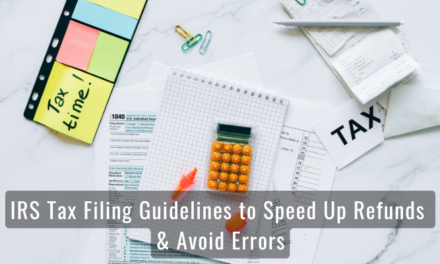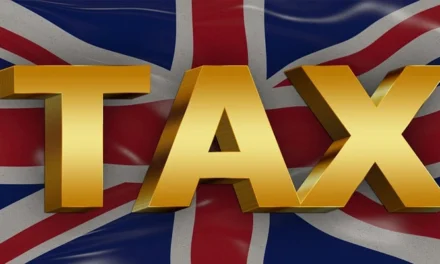Every year, the Internal Revenue Service (IRS) releases a list of the top 12 tax scams known as the “Dirty Dozen.” These scams target taxpayers, businesses, and tax professionals, aiming to steal personal information, financial data, or illicitly claim refunds. The 2025 list warns of new and evolving schemes, including phishing scams, misleading tax credit promotions, and fraudulent preparers. This blog provides an in-depth analysis of these threats and essential steps to protect yourself.
1. Email Phishing Scams
Phishing remains a top threat, where scammers send emails impersonating the IRS or tax agencies. These emails often promise refunds or warn of tax issues to trick recipients into clicking malicious links or providing sensitive information.
Types of Phishing:
- Phishing Emails: Fraudulent emails claiming to be from the IRS, promising tax refunds or threatening legal action.
- Smishing (SMS Phishing): Fraudulent text messages that falsely claim account suspensions or suspicious activity, urging recipients to click on harmful links.
How to Stay Safe:
- Do not click on links in unsolicited tax-related emails or texts.
- Report phishing attempts to phishing@irs.gov.
- Always verify IRS communications through IRS.gov.
2. Misleading Social Media Tax Advice
 Social media platforms, especially TikTok, are filled with incorrect tax advice, misleading users into making false claims or filing fraudulent returns.
Social media platforms, especially TikTok, are filled with incorrect tax advice, misleading users into making false claims or filing fraudulent returns.
Common Misinformation:
- Incorrect use of Form W-2 for refund claims.
- Claims that non-existent tax credits can lead to large refunds.
How to Stay Safe:
- Follow verified tax professionals and IRS guidelines.
- Cross-check information with official IRS sources.
3. IRS Individual Online Account Scams
Scammers pose as third-party helpers, offering to set up IRS online accounts for taxpayers. Their real goal is to steal personal information and file fraudulent tax returns in the victim’s name.
How to Stay Safe:
- Set up your IRS account yourself at IRS.gov.
- Never share login credentials with anyone.
4. Fake Charities
Fraudsters exploit generosity by creating fake charities, particularly after natural disasters, to collect donations and personal information.
How to Stay Safe:
- Verify charities using the IRS Tax-Exempt Organization Search Tool.
- Never donate via unsolicited emails or phone calls.
5. False Fuel Tax Credit Claims
The Fuel Tax Credit is only available for off-highway and farming use, yet scammers falsely claim eligibility to boost refunds.
How to Stay Safe:
- Only claim the credit if you meet the strict IRS requirements.
- Avoid tax preparers promoting large refunds using this credit.
6. Fake Self-Employment Tax Credit Claims
Fraudulent claims for non-existent “Self-Employment Tax Credits” mislead taxpayers into filing incorrect returns.
How to Stay Safe:
- Understand that no such tax credit exists.
- Rely on IRS-approved tax credits only.
7. Improper Household Employment Tax Claims
Scammers invent household employees to claim fraudulent tax credits using Schedule H (Form 1040).
How to Stay Safe:
- Do not claim employment credits unless you have paid actual wages to household employees.
8. Overstated Withholding Scam
This scam involves filing fraudulent W-2 or 1099 forms with inflated income and tax withholding to generate a large refund.
How to Stay Safe:
- Never falsify income or withholding amounts.
- Ensure all documents match IRS records.
9. Misleading Offers in Compromise (OIC)
Scammers aggressively market OIC programs to taxpayers who do not qualify, charging high fees without delivering results.
How to Stay Safe:
- Use the free IRS OIC Pre-Qualifier Tool to determine eligibility.
- Avoid companies making unrealistic claims about tax debt reductions.
10. Ghost Tax Preparers
These fraudulent tax preparers prepare returns but refuse to sign them, leaving taxpayers vulnerable to errors or fraud.
How to Stay Safe:
- Only use preparers with a valid IRS Preparer Tax Identification Number (PTIN).
- Avoid preparers who base their fee on the size of your refund.
11. New Client Scams and Spear Phishing
Cybercriminals pose as new tax clients, sending emails with malicious links or attachments to compromise tax professionals’ systems.
How to Stay Safe:
- Verify new client identities before accepting tax documents.
- Use secure, encrypted email for document exchanges.
12. Additional Abusive Schemes
Beyond the Dirty Dozen, other tax schemes involve offshore accounts, trust-based fraud, and bogus Individual Retirement Arrangements (IRAs).
How to Stay Safe:
- Be cautious of tax strategies that seem “too good to be true.”
- Consult reputable tax professionals before participating in any tax-saving arrangement.
How to Report Tax Scams
The IRS encourages taxpayers to report tax fraud and suspicious tax return preparers using Form 14242:
Mail:
Internal Revenue Service
Lead Development Center MS7900
1973 N. Rulon White Blvd
Ogden, UT 84404
Fax: 877-477-9135
Whistleblower Office:
Taxpayers can submit information to the IRS Whistleblower Office for potential monetary awards.
Frequently Asked Questions (FAQ)
1. How do I know if an IRS email or message is a scam?
Scammers often send unsolicited messages pretending to be the IRS. The IRS does not initiate contact through email, text, or social media. If you receive an unexpected message, report it to phishing@irs.gov.
2. Can I really go to jail for tax fraud?
Yes, tax fraud is a serious federal crime. Penalties include heavy fines and possible imprisonment, depending on the severity of the fraud.
3. What should I do if I suspect a tax preparer is committing fraud?
Report suspicious tax preparers using Form 14157 and submit it to the IRS.
4. How can I verify if a charity is legitimate?
Use the IRS Tax-Exempt Organization Search Tool to check the legitimacy of a charity before donating.
Conclusion
The IRS Dirty Dozen list highlights the most common tax scams each year. Protect yourself by staying informed, avoiding unsolicited IRS communications, and working with trusted tax professionals. If you suspect fraud, report it to the IRS immediately.





